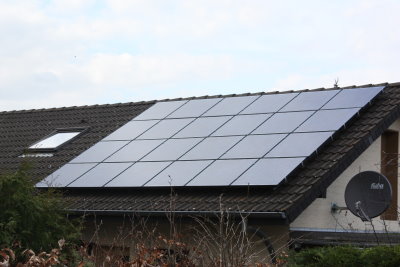Is PV worthwhile as a financial investment - profitability & amortization of photovoltaics - Calculate Now
Everything was supposedly better in the past, including in the context of photovoltaics. At least, that's what you might think when you look at current media reports. They talk about horrendous amortization periods that photovoltaic systems would now have to show due to the constant reductions in the legally guaranteed feed-in tariff.
The fact is that photovoltaic systems have always been a worthwhile form of power generation, at least from an ecological point of view. After all, it could hardly be more environmentally friendly. However, ecology was and is not necessarily the primary decision factor that motivates the installation of a photovoltaic system.
It is truly the feed-in tariffs and the associated income that can be generated by such a photovoltaic system that usually underlie the PV project.
And exactly at this point the photovoltaic critics see their chance now come and deny the entire photovoltaic principle any economic efficiency.
This is justified with the law changes in the renewable energy law, which induced with the feed-in tariff in the course of the last years really not to be despised cuts.
But before one now speaks out against the photovoltaic principle, one should not forget to deal with the justifications of the changes in the law with regard to the feed-in tariff. For these are based on the fact that the acquisition costs for PV systems have fallen drastically over the last few years, so that without a reduction in the feed-in tariff there would be a clear imbalance in favor of revenue.
And reality speaks a clear language in this regard. In fact, one pays significantly less for a photovoltaic system today than in 2015, for example, which justifies the corresponding german EEG savings.
So the question remains whether discussions about today's inefficiency of a photovoltaic system are really based on facts or whether they are nothing more than media doomsaying. A comparison of the PV payback periods from the years 2015 and 2022 can provide information in this regard.
Photovoltaic payback comparison for self-financing
If you compare the expenses for a photovoltaic system in 2015 with the expenses for an identical PV system today, you will see a real price drop.The same can be said of the feed-in tariff, so that a payback period comparison for PV systems installed in these two years is almost inevitable.
Therefore, exactly such a comparison will be made here for PV systems of different orientations. The basis for this is a photovoltaic system that was financed entirely from the company's own funds.
In the following examples, the Bavarian region serves as the PV location and in each case the photovoltaic yields under optimal conditions, i.e. a 30 degree inclined roof surface with southern orientation without shading.
Similar Calculator Topics: Building, living, photovoltaics, energy technology, building services, investment, finances, assets, profitability, saving money, renewables


